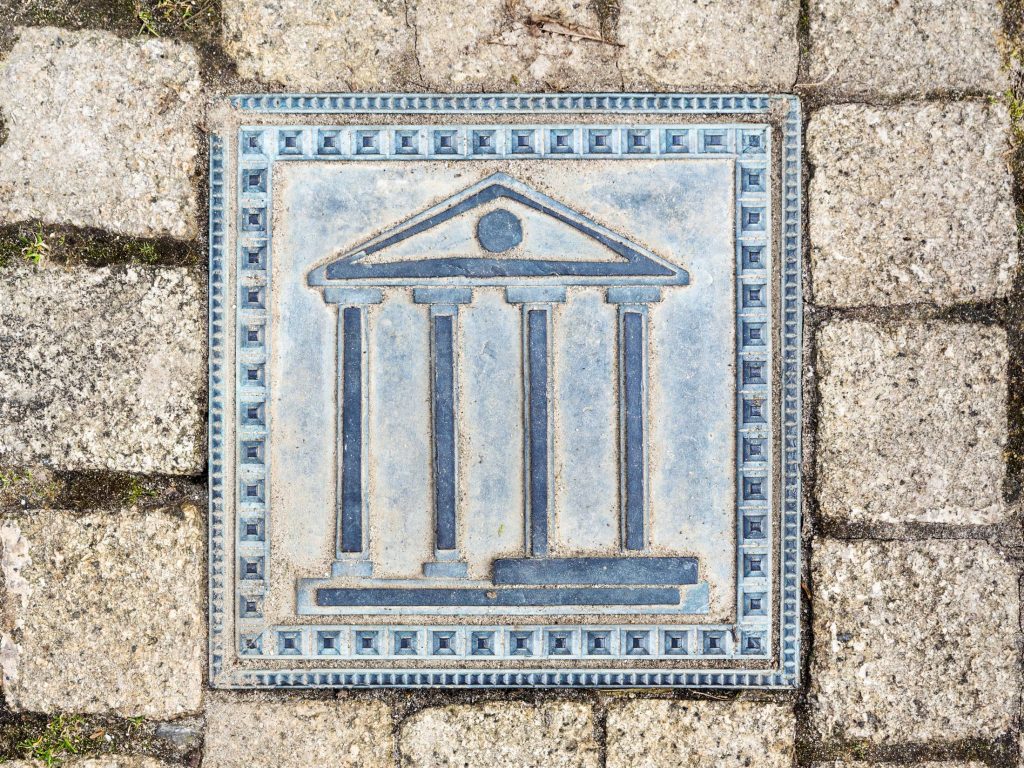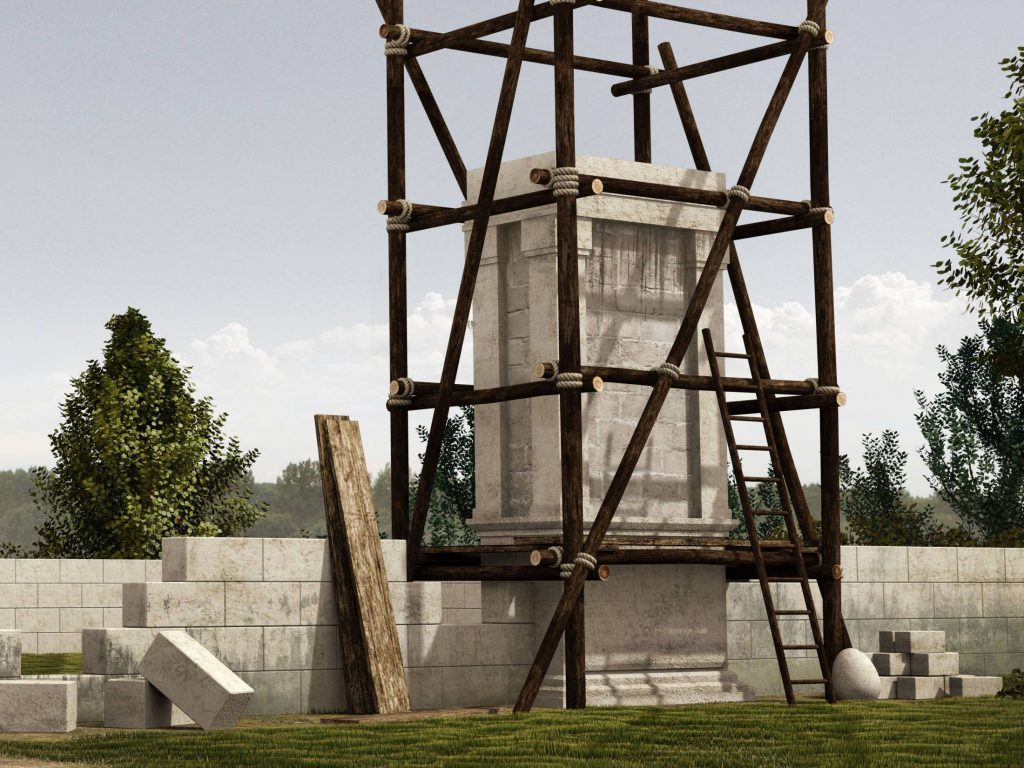Here rests a Roman lady
Hereweg, Landgraaf
Bronze paving stones lead you to the final resting place of a wealthy woman from Roman times. She not only had an impressive grave monument of 16 by 16 meters, but also entered the afterlife with 44 grave goods. These objects tell us much about her life.
She may have loved good food, as she was buried with a full dinner set for a four-course meal and a folding chair to sit on. Roman women were not allowed to recline at meals like men did. A bronze pan was used to wash hands before eating. She also received a mortar and a skin scraper, which were part of the Roman bathing ritual.
Near the grave, remains of a Roman house were found. It is quite possible that the woman lived there. It is also likely that the grave monument was placed along the Via Belgica, although the exact course of the road here has not yet been determined.
Discover
- Follow a guide from Stichting Linea Recta through Roman Landgraaf
- Read 'The Amulet of the Lichtberg'
Fun to know
- Final resting place along the road
- The Romans cremated their dead and buried the ashes in urns, together with grave goods for the afterlife. Graves were placed outside the settlement, usually along a major road. Monuments carried inscriptions that urged people to remember the deceased. The monumental woman’s grave in Landgraaf must have been impressive. The foundation of the enclosure has been found, but the grave monument itself is missing. As with the Roman bridges of Rimburg and Maastricht, it is possible that its stones were reused in a later building.
- The road of roads
- The Romans were the first true road builders. Many of our current roads lie on top of Roman predecessors. A Roman road was not laid just anywhere: first, a surveyor was sent out to determine the fastest and best route between two points. Romans disliked detours. That is why the Via Belgica runs fairly straight through South Limburg—at least, that is our assumption. The exact course has only been identified in a few places. In Voerendaal, even a complete cross-section of the road – with cart tracks – has been excavated. You can see it at the Thermenmuseum in Heerlen.

